

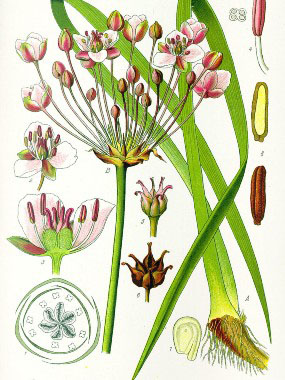
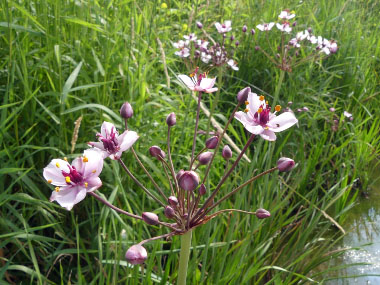
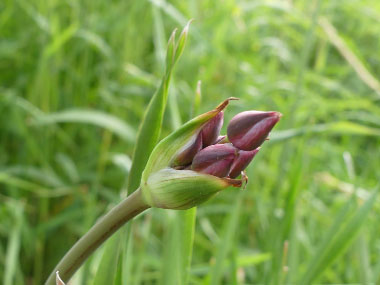
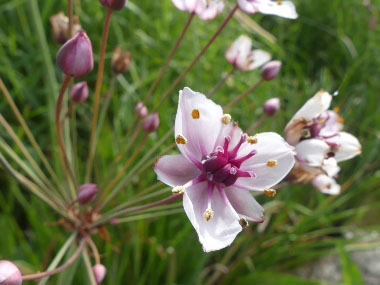
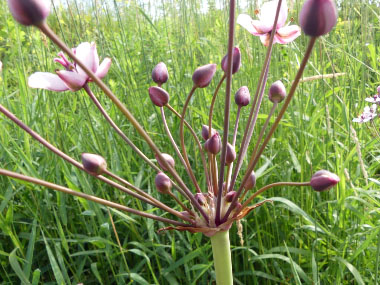
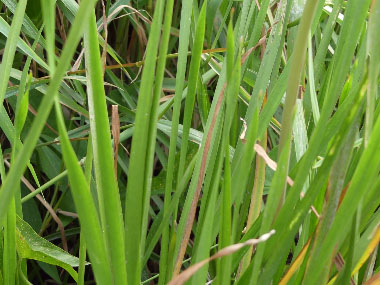
To support our efforts please browse our store (books with health benefits, etc.).
Flowering rush is an attractive, perennial aquatic plant found along shallow, slow-moving rivers, lake shores and in relatively deep water. It somewhat resembles a true rush, yet this is in its own family (Butomaceae) ,and can be easily distinguished by the pinkish flowers. Flowering rush is native to Europe and Asia and it was introduced to North America as an ornamental.
Distinguishing Features
When in bloom it can be easily spotted by the umbrella-like clusters of attractive pinkish flowers. These flower blooms stand out and can generally be spotted without any difficulty.
Flowers
Flowers grow on tall, cylindrical stalks in round-topped umbrella-like clusters. Flowering rush’s inflorescence usually only has 4 to 8 flowers open at any given time, but over the couple of months that it is in bloom it can produce 30 or 40 flowers. Each flower measures 2 to 2.5 cm (0.8 to 1") across. Although this looks like it has 6 petals, there are only 3; each has 9 stamens. Flower petals are pinkish and the stamens are darn pink to red. Blooms June to August.
 Fields
of Nutrition has medicinal benefits and vitamin/mineral content of Flowering Rush.
Fields
of Nutrition has medicinal benefits and vitamin/mineral content of Flowering Rush.
Leaves
The leaves are thin, linear, sword-shaped, triangular in cross-section, and up to 120 cm (50 inches) long. Margins are smooth. The leaves are rigid with a tapered tip. At the base the leaves grow alternate.
Height
Flowering plants can be up to 1.5 metres (5’) tall.
Habitat
Flowering rush can be found in slow-moving waters such as lake shores, rivers, and along creeks. They are usually in shallow water with a clay or sludge bottom. In deeper water they may occur as a flowerless submerged plant. This plant grows in many states and provinces.
Edible Parts
Tubers are considered edible but according to PFAF they should be peeled, and the rootlets removed before cooking. The root can be dried and ground into a powder. The powder can be used as a thickener or be added to cereal flours when making bread. It contains a substantial amount of starch. Seeds are very small but are considered edible.
Other Name
Water Gladiolus.
Similar Plants
Winter Survival Food Handbook

PDF Plant Magazines
Types of Wild Food
Geographic Zones Seasons
Disclaimer
EdibleWildFood.com is informational in nature. While we strive to be 100% accurate, it is solely up to the reader to ensure proper plant identification. Some wild plants are poisonous or can have serious adverse health effects.
We are not health professionals, medical doctors, nor are we nutritionists. It is up to the reader to verify nutritional information and health benefits with qualified professionals for all edible plants listed in this web site. Please click here for more information.
Why Edible Wild Food?
- Food costs are rising
- Free, wild food is readily abundant
- Wild food adds nutrition to your diet
- Wild food can help treat various medical conditions





